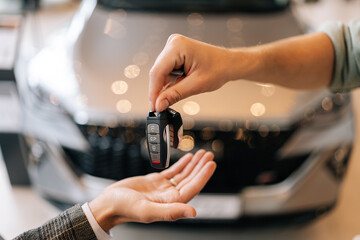Get the auto insurance you need at a price you can afford. Shop around, improve your credit score, and increase your deductible to lower your auto insurance rates.
It offers all standard types of auto coverage, including bodily injury liability, collision, comprehensive, and uninsured motorist coverage, and medical payments coverage. It also offers usage-based insurance programs that can help good drivers save money. Visit https://www.nicholsoninsurance.com for more information.
Comprehensive car insurance is a type of automobile coverage that protects your vehicle against damage sustained from events not related to traffic collisions, such as theft, natural disasters and vandalism. It is often included in a full-coverage car insurance policy with liability and collision coverage, but can also be purchased as a standalone policy. When you purchase comprehensive car insurance, you must choose a deductible that you will be responsible for paying in the event of a claim. Typically, the higher the deductible you select, the lower your premium will be.
In addition to covering repair bills, comprehensive auto insurance policies typically cover the actual cash value of your car when it is repaired or replaced, up to its specified maximum limit. This is the most common way to determine your vehicle’s value, as opposed to a replacement cost valuation.
Although you can’t drive without comprehensive car insurance, the truth is that not everyone needs it. If you have the financial means to pay for repairs out of pocket, comprehensive insurance isn’t necessary. However, if you need to finance or lease your vehicle, most lenders will require comprehensive coverage as part of the overall car loan package.
Comprehensive coverage is a valuable tool that can help keep your vehicle safe and give you peace of mind. It is important to remember, though, that no car insurance policy can fully protect you against all risks and losses. As a result, it is vital to evaluate your personal risk tolerance and make decisions accordingly.
You should also consider whether or not the benefits of comprehensive coverage are worth the added cost, and consider other types of protection that may be available to you, such as roadside assistance and rental reimbursement. These additional coverage options can often be included in a comprehensive policy and are usually cheaper than purchasing them separately. Moreover, it is important to revisit the question of whether or not comprehensive car insurance is worth it every time you get your policy renewed. This will ensure that you are not paying for something that you no longer need.
Collision Coverage
Collision coverage pays to repair or replace your car after an accident with another vehicle or an object, such as a tree or a light post. This type of coverage is typically optional, but some lenders require it if you are leasing or financing your vehicle. This type of insurance also provides reimbursement if your car is stolen or vandalized while parked. According to NerdWallet, collision coverage is a good option for people who want to ensure their car is covered against damage from accidents that are their fault, such as when they hit a spooked deer or an object that rolls into the road.
The cost of collision insurance varies and is often tied to the value of your car. If your car is new or worth a significant amount, this coverage might be a wise investment. On the other hand, older vehicles that have dropped in value may not be worth the extra cost of collision coverage. A good way to determine the value of your car is by estimating its value through a resource such as Kelley Blue Book. You can then determine whether or not you would be better off omitting this coverage from your policy to save on monthly premiums.
A car accident is a stressful experience, and the last thing you need to worry about is how to pay for repairs or replacements. However, accidents can happen even when you are driving safely, and liability insurance will only cover damages to other cars and drivers if you are found at-fault. Collision coverage helps to protect you against this risk and is a smart investment.
You can choose a high or low deductible when purchasing this coverage, and you can also choose to waive your deductible entirely. This can reduce your monthly premium significantly, but be sure you are comfortable with the amount of money you could pay out-of-pocket in the event of a claim. In addition to collision coverage, you may wish to consider adding additional options to your policy, such as accidental death and dismemberment coverage. This coverage pays out a set amount for serious injuries or death to you and your passengers, in addition to any amounts paid out by your liability insurance in the event of an accident.
Uninsured Motorist Coverage
Uninsured motorist coverage can help you pay for injuries or car damage if the at-fault driver doesn’t have insurance or doesn’t have enough. It also helps prevent you from having to pay your own insurance policy’s deductible if you choose collision coverage. However, it usually costs more to add this coverage than other types of auto insurance. It’s available in most states and some require it as part of minimum car insurance requirements.
Depending on your state, there are two types of uninsured motorist coverage: uninsured motorist property damage and uninsured motorist bodily injury. The latter is sometimes called UMBI, and it covers medical bills for you and your passengers up to the policy’s limits, as well as some other expenses. It may also cover pain and suffering. This type of coverage is typically a standard part of your car insurance policy, but it is important to review the details since requirements vary by state.
If a driver doesn’t have any insurance or hits you while you’re stopped at traffic lights and flees the scene, this type of coverage can help you find them later. It can also pay for damages if the driver is identified after the crash. Oftentimes, this is the only way to get compensation from an uninsured or hit-and-run driver.
While many drivers have liability coverage to pay for accidents they cause, there are still a lot of people on the road who don’t. Adding uninsured and underinsured motorist coverage is a great way to protect yourself if you’re involved in an accident with one of them. It’s possible to “stack” this type of coverage, which means you can combine the uninsured motorist limits from multiple vehicles and policies under the same insurer. It’s also legal in some states to have uninsured motorist coverage that exceeds the state minimums. This is sometimes referred to as excess UM/UIM coverage. However, you should be aware that some companies do not allow it or limit how much of this coverage you can buy. In this case, it is best to stick with the state minimums.
Underinsured Motorist Coverage
Uninsured motorist coverage (also known as UM/UIM) pays for your expenses when you’re involved in an accident with a driver who doesn’t have insurance or has low liability limits. Some states require UM/UIM as part of your car insurance policy, while others offer it as an optional add-on.
UM/UIM comes in two forms: property damage and bodily injury. Bodily injury is typically included in your health insurance plan as Personal Injury Protection or Medical Payments, so it’s not a necessary addition to your auto policy. Property damage coverage, on the other hand, is usually a must-have. It covers things like vehicle repairs and other property damage resulting from an accident with an uninsured or underinsured driver.
The main reason why you may want underinsured motorist coverage is if the at-fault driver’s liability limits aren’t enough to cover all the damages from an accident you’re involved in. If you don’t have underinsured motorist coverage, you’ll end up footing the bill for the difference, which could add up to a significant amount of money.
Another reason to consider UM/UIM is that it can protect you against hit-and-run drivers. Hit-and-run accidents are more common than you might think, with one study estimating that about 1 in 8 drivers are involved in a hit-and-run crash each year.
While underinsured and uninsured motorist coverage isn’t required in every state, it’s a good idea to have it on your policy to protect yourself and your family. Plus, it’s relatively inexpensive.
Contact your auto insurance professional to discuss adding UM/UIM to your car policy. Your agent can help you determine the right coverage limit for your situation and give you peace of mind knowing that you’re protected if the unexpected happens.
